the-accumulator
Gold Member
- Joined
- Jan 24, 2008
- Messages
- 909
Here's what I got and what I think:
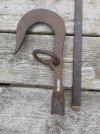
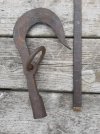
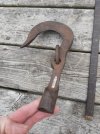
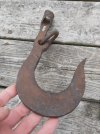
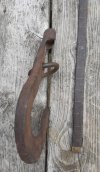 I would take a tool like this into the timber with me to facilitate attaching a rope high up in a tree. I would sacrifice a 16 ft tall sapling, taper the skinny end to fit into the socket on this tool, connect my rope to the ring, and attach the hook high up in the tree, pull my sapling handle out, and use the rope to persuade the tree to fall where I want it to fall. Am I on the right track?? T-A
I would take a tool like this into the timber with me to facilitate attaching a rope high up in a tree. I would sacrifice a 16 ft tall sapling, taper the skinny end to fit into the socket on this tool, connect my rope to the ring, and attach the hook high up in the tree, pull my sapling handle out, and use the rope to persuade the tree to fall where I want it to fall. Am I on the right track?? T-A




 I would take a tool like this into the timber with me to facilitate attaching a rope high up in a tree. I would sacrifice a 16 ft tall sapling, taper the skinny end to fit into the socket on this tool, connect my rope to the ring, and attach the hook high up in the tree, pull my sapling handle out, and use the rope to persuade the tree to fall where I want it to fall. Am I on the right track?? T-A
I would take a tool like this into the timber with me to facilitate attaching a rope high up in a tree. I would sacrifice a 16 ft tall sapling, taper the skinny end to fit into the socket on this tool, connect my rope to the ring, and attach the hook high up in the tree, pull my sapling handle out, and use the rope to persuade the tree to fall where I want it to fall. Am I on the right track?? T-A